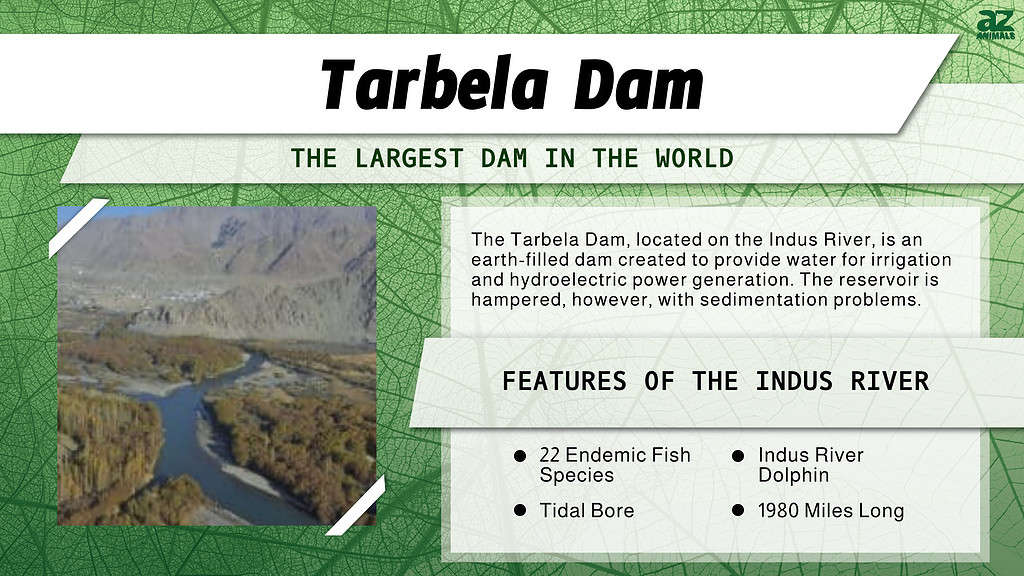
Dams are incredibly important structures. They help control the flow of water in a given area and can be outfitted to generate hydroelectric power. Many of the largest rivers in the world have multiple dams along their length to help capture the immense power of moving water. Although many people know about the Hoover Dam, that’s a relatively small dam compared to others in existence. Today, we’re going to look at the largest dam in the world. Learn where it’s at, how large it is, and how it measures up to some of the most famous dams.
What is a Dam?
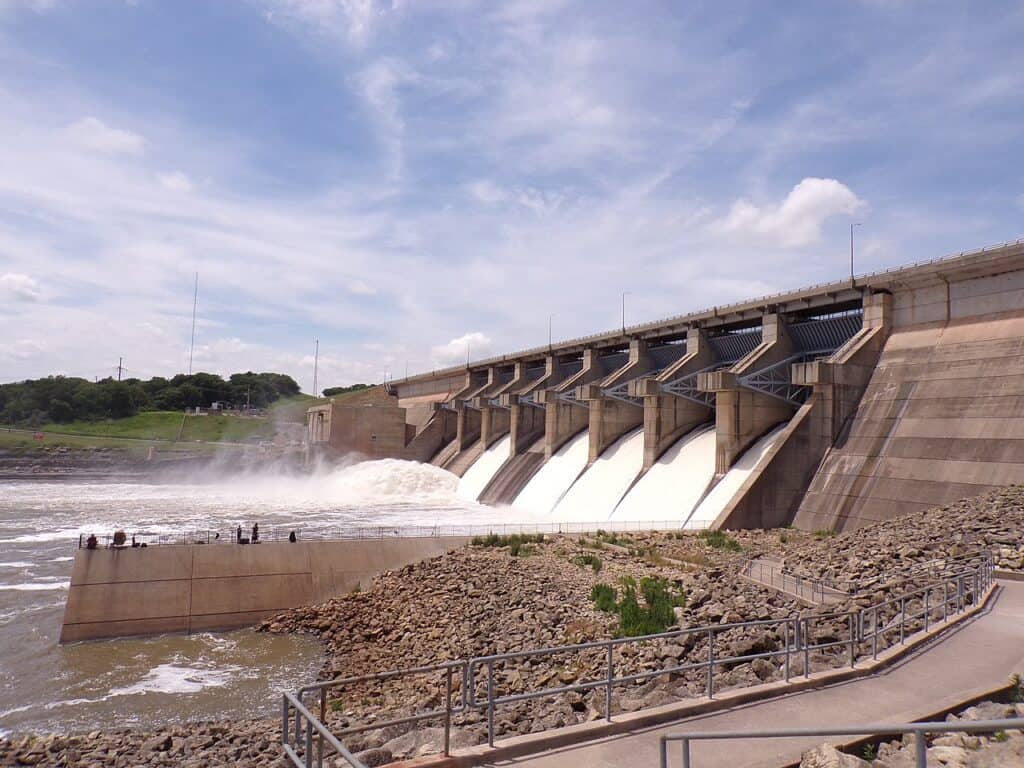
Dams have many functions, sizes, and shapes.
©Smallboy944 / Creative Commons – License
Dams often refer to man-made barriers that are designed to prevent or impede the flow of water in a given area. They have many different uses. For example, dams are often used to hold drinking water, provide water for irrigation, and create hydropower.
Dams are often used in conjunction with levees and floodgates to control the flow of water and prevent it from going into certain areas. For example, the upper portion of the Mississippi River is home to several dams and locks that are designed to aid in controlling water levels.
Dams are complex structures that require years of planning and a great deal of upkeep. However, not all dams are made for the same purposes.
What Are Different Types of Dams?
Dams will often vary in their construction, materials, and purpose. We’re going to review a few types of dams by their function, so you can get an idea of their overall use.
- Dry dams are made to prevent flooding during times of excess rainfall. These dams allow water to flow normally until a flood level is reached. Then, the dam holds back the water and releases it in a controlled manner.
- Diversionary dams are used to send all or a great deal of the water from a river to another path. These dams are often used for generating hydroelectric power as well as irrigation.
- Tailings dams are usually earth-fill dams that store mining leftovers. These simple embankment dams grow with the mining operation. Some of the largest dams in the world are tailings dams.
- Weirs are also called overflow dams, and they are used to create an impoundment lake to claim water. These tend to be very small dams in terms of height and length.
These are just a few ways that people use dams today. While some of them can be very small-scale, others can be incredibly large.
For our purposes, we are going to look at the largest man-made dams in the world. Thus, we will not consider tailings dams. Tailings dams are earth structures used to contain mining materials. If they were not considered separately, then they would easily be the largest structures. Although they are impressive, they’re not the dams most people are interested in knowing about.
How Do We Measure the Largest Dam in the World?
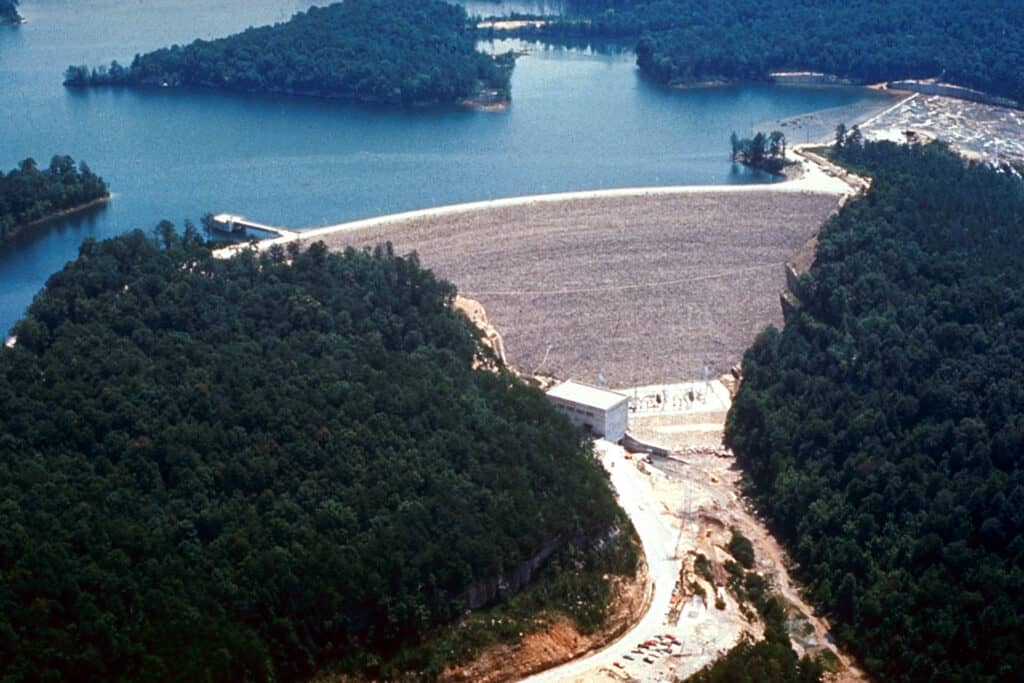
The best way to measure the dams for size is by their volume.
Another thing to consider is how we are going to measure the largest dam in the world. Looking at measures of reservoir capacity and installed capacity for power generation may be useful. Yet, we’re going to consider only the structure volume to determine which dam is the largest rather than the tallest dam in the world.
What is the Largest Dam in the World?
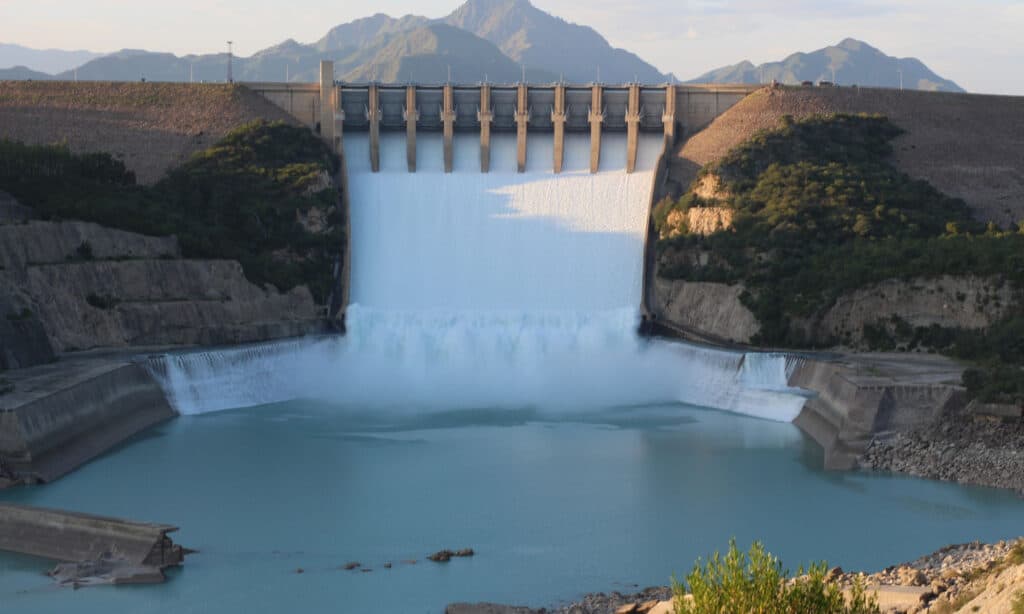
The Tarbela Dam is the largest dam in the world by volume.
©OoziBubble_Photography/Shutterstock.com
The largest dam in the world is the Tarbela Dam. The Tarbela Dam has a structural volume of 106,000,000 m3, far more than the second-place Fort Peck Dam. The Tarbela Dam is only 143 meters in height, making it a somewhat average-size embankment dam.
Tarbela Dam is located in Pakistan along the Indus River. The earth-filled dam was designed to help provide water for irrigation as well as to help generate hydroelectric power. The estimated installed capacity of the hydroelectric power generation of the dam is about 4,888 MW with a maximum of 6,298 MW at maximum. Still, most of the water that flows through the dam area is not used for power generation.
The original reservoir volume created by the dam was 11,600 Mm3. However, the sedimentation of the reservoir has led to a far lower volume. The usefulness of the dam will wane in the future as a result.
If we were to count tailings dams, then the largest one would be the Syncrude Tailings Dam in Canada, with a structural volume of 540,000,000 m3.
Where is the Largest Dam in the World Located on a Map?
The Tarbela Dam is located along the Indus River in Pakistan. The dam is about 30 km from the city of Swabi, 52 km from Haripur, and 105 km northwest of the capital city of Islamabad. The dam created the large and long Tarbela Lake that continues north as the Indus River.
What is the Tallest Dam in the World?
The tallest manmade dam in the entire world is the Jinping-I Dam, and it measures 305 meters or 1,001 feet tall. This is a double-curved concrete arch dam that was designed to produce hydroelectricity. The dam is located in Sichuan, China, and is situated on the Yalong River.
How does this compare to a dam that is familiar to most people reading this, the Hoover Dam? Well, the Hoover Dam is just 726ft tall or 221.4 meters and has a volume of 2,480,000 m3. As you can see, this dam is much shorter than the Jinping-I Dam. Also, it has far less structural volume than the Tarbela Dam.
What Dam Produces the Most Energy?
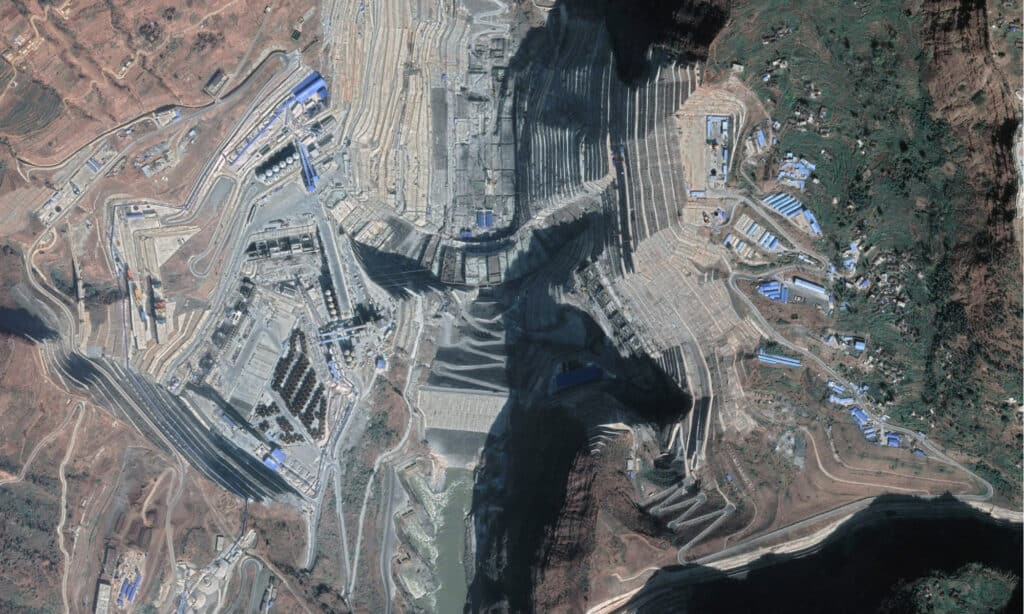
The Yangtze River is home to many hydroelectric dams.
©burakyalcin/Shutterstock.com
Many of the dams that are created these days are designed to generate hydroelectric power. Thus, it’s only fair to mention the one that produces the most energy. The Three Gorges Dam produces the most energy, and its installed capacity is 22,500 MW.
The Three Gorges Dam is a gravity dam located in China and is situated on the Yangtze River. The dam measures 181 meters high and has a length of 2,335 miles, and it also has a large reservoir.
Dams around the world come in many sizes and with several different purposes. While the largest dam in the world is used for power generation and irrigation, other large dams are used to help create a water supply for humans. The massive scale of the Tarbela Dam is not likely to be matched soon, though.
New dams take many years to build, so Tarbela Dam could maintain its status as the largest dam in the world until it is no longer useful.
What Are the Tallest Dams in the World?
At the top of the list of the tallest dams in the world is a dam so big that it’s nearly double the height of the second-tallest dam on Earth.
The tallest dam in the world is the Usoi Dam in Tajikistan, situated along the Murghab River. It is an impressive 1,860 feet (567 meters) tall and all-natural, created by an earthquake measuring 7.4 on the Richter scale in 1911 that triggered a huge landslide, creating a wall of earth and rock that is the dam. No other dam, manmade or natural, even comes close to the size of the Usoi Dam.
Jinping-I Dam is the second tallest dam and the tallest manmade dam on the planet, measuring 1,001 feet (305 meters) tall.
Nurek Dam in Tajikistan and Xiaowan Dam, Baihetan Dam, and Xiluodu Dam in south-central China are among the top 6 tallest dams in the world. Grande Dixence Dam in Switzerland, Enguri Dam in the country of Georgia, Yusufeli Dam in Turkey, and Vajont Dam in Italy round out the top 10 tallest dams.
Which Dams Are the Largest in the U.S.?
Now we’ve looked at the largest and tallest dams in the world, let’s consider the largest dams in the United States.
The top 5 dams by height in the U.S. are:
- Oroville Dam (770 feet)
- Hoover Dam (726 feet)
- Dworshak Dam (717 feet)
- Glen Canyon Dam (710 feet)
- New Bullards Bar Dam (645 feet)
The top 5 dams by water capacity in the U.S. are:
- Hoover Dam (8.95 cubic miles)
- Glen Canyon Dam (8.53 cubic miles)
- Garrison Dam (7.05 cubic miles)
- Oahe Dam (6.98 cubic miles)
- Fort Peck Dam (5.52 cubic miles)
More information on all these dams can be found here.
The photo featured at the top of this post is © OoziBubble_Photography/Shutterstock.com
Thank you for reading! Have some feedback for us? Contact the AZ Animals editorial team.






